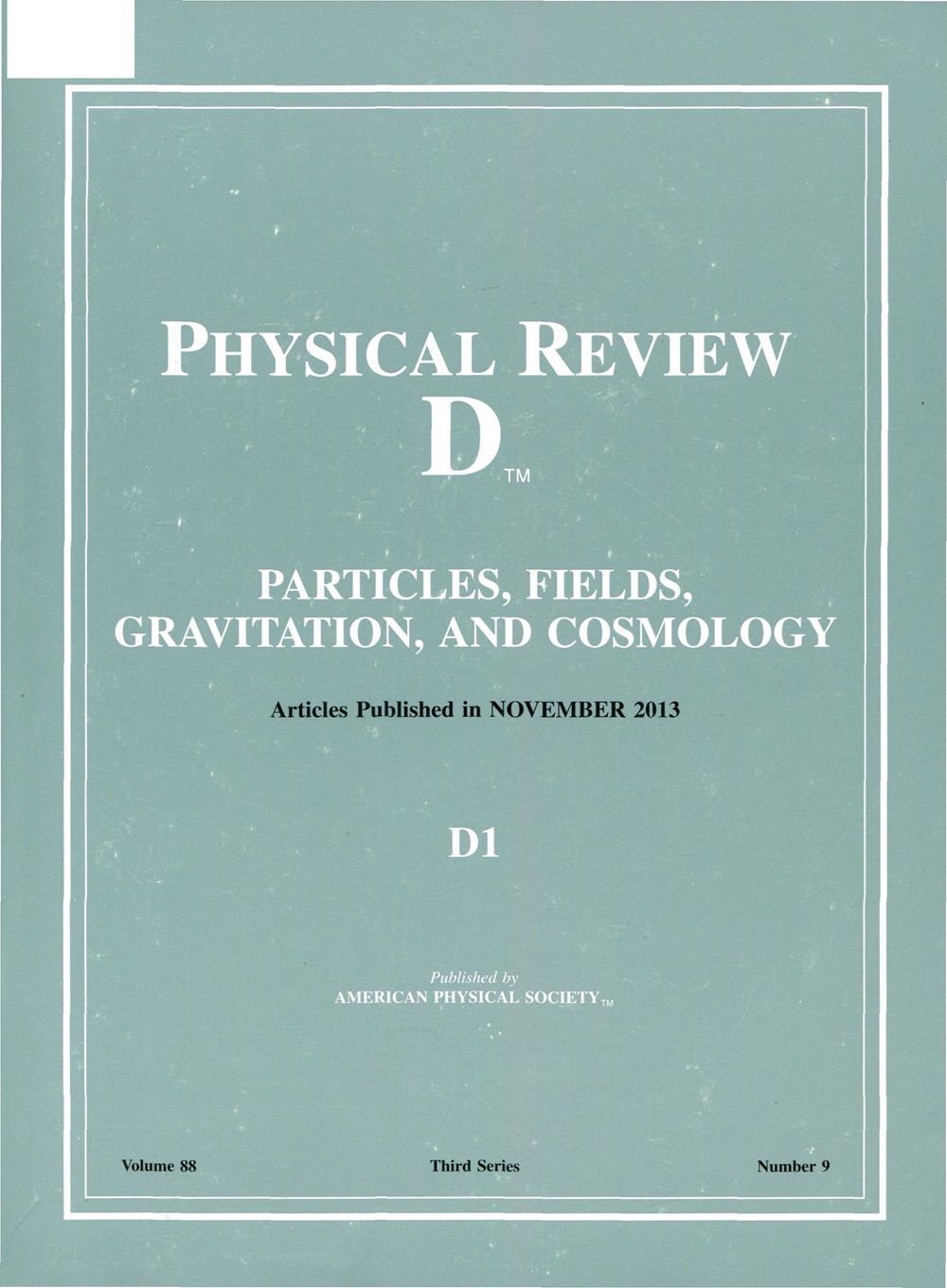最小阿贝尔库仑分支的分类
IF 5.3
2区 物理与天体物理
Q1 Physics and Astronomy
引用次数: 0
摘要
得到库仑分支具有孤立奇点的三维N=4振子的分类,是理解任意维度8超对称场论真空模空间的重要步骤。在本文中,我们导出了任意电荷的阿贝尔颤振的完全分类,并将所有可能的库仑分支几何标识为Hn × U(1)的商或有限循环群。我们给出了两个证明,一个使用“衰变和裂变”算法,另一个只依赖于涉及三维镜像对称的显式计算。在此过程中,我们提出了一种对任意U(1)r规范理论中离散规范因子敏感的三维镜像计算方法。这构成了对衰变和裂变算法的确认。2025年由美国物理学会出版本文章由计算机程序翻译,如有差异,请以英文原文为准。
Classification of minimal Abelian Coulomb branches
Obtaining the classification of three-dimensional (3D) N=4 quivers whose Coulomb branches have an isolated singularity is an essential step in understanding moduli spaces of vacua of supersymmetric field theories with eight supercharges in any dimension. In this work, we derive a full classification for such Abelian quivers with arbitrary charges and identify all possible Coulomb branch geometries as quotients of H n U ( 1 ) r Published by the American Physical Society 2025
求助全文
通过发布文献求助,成功后即可免费获取论文全文。
去求助
来源期刊

Physical Review D
物理-天文与天体物理
CiteScore
9.20
自引率
36.00%
发文量
0
审稿时长
2 months
期刊介绍:
Physical Review D (PRD) is a leading journal in elementary particle physics, field theory, gravitation, and cosmology and is one of the top-cited journals in high-energy physics.
PRD covers experimental and theoretical results in all aspects of particle physics, field theory, gravitation and cosmology, including:
Particle physics experiments,
Electroweak interactions,
Strong interactions,
Lattice field theories, lattice QCD,
Beyond the standard model physics,
Phenomenological aspects of field theory, general methods,
Gravity, cosmology, cosmic rays,
Astrophysics and astroparticle physics,
General relativity,
Formal aspects of field theory, field theory in curved space,
String theory, quantum gravity, gauge/gravity duality.
 求助内容:
求助内容: 应助结果提醒方式:
应助结果提醒方式:


